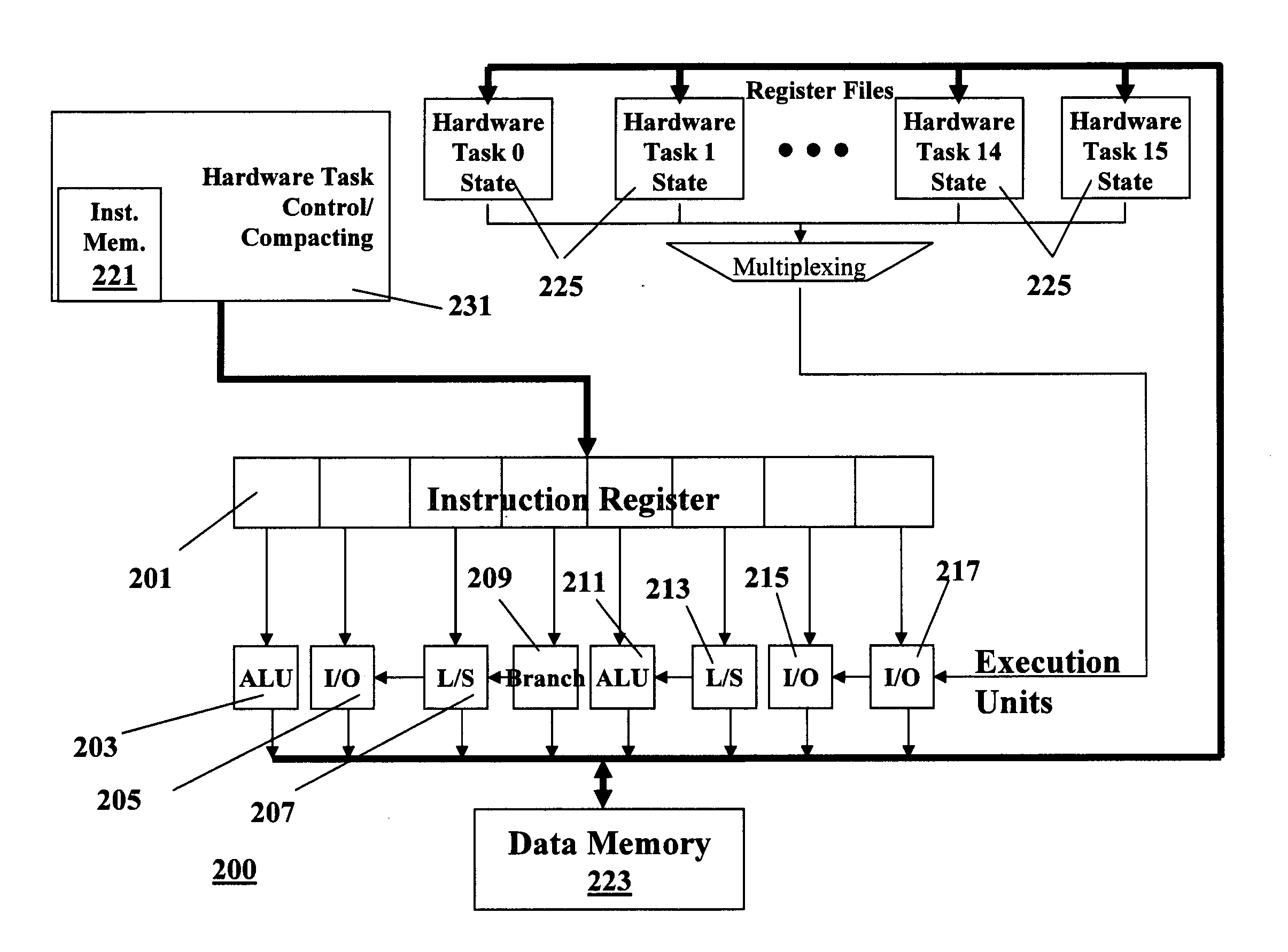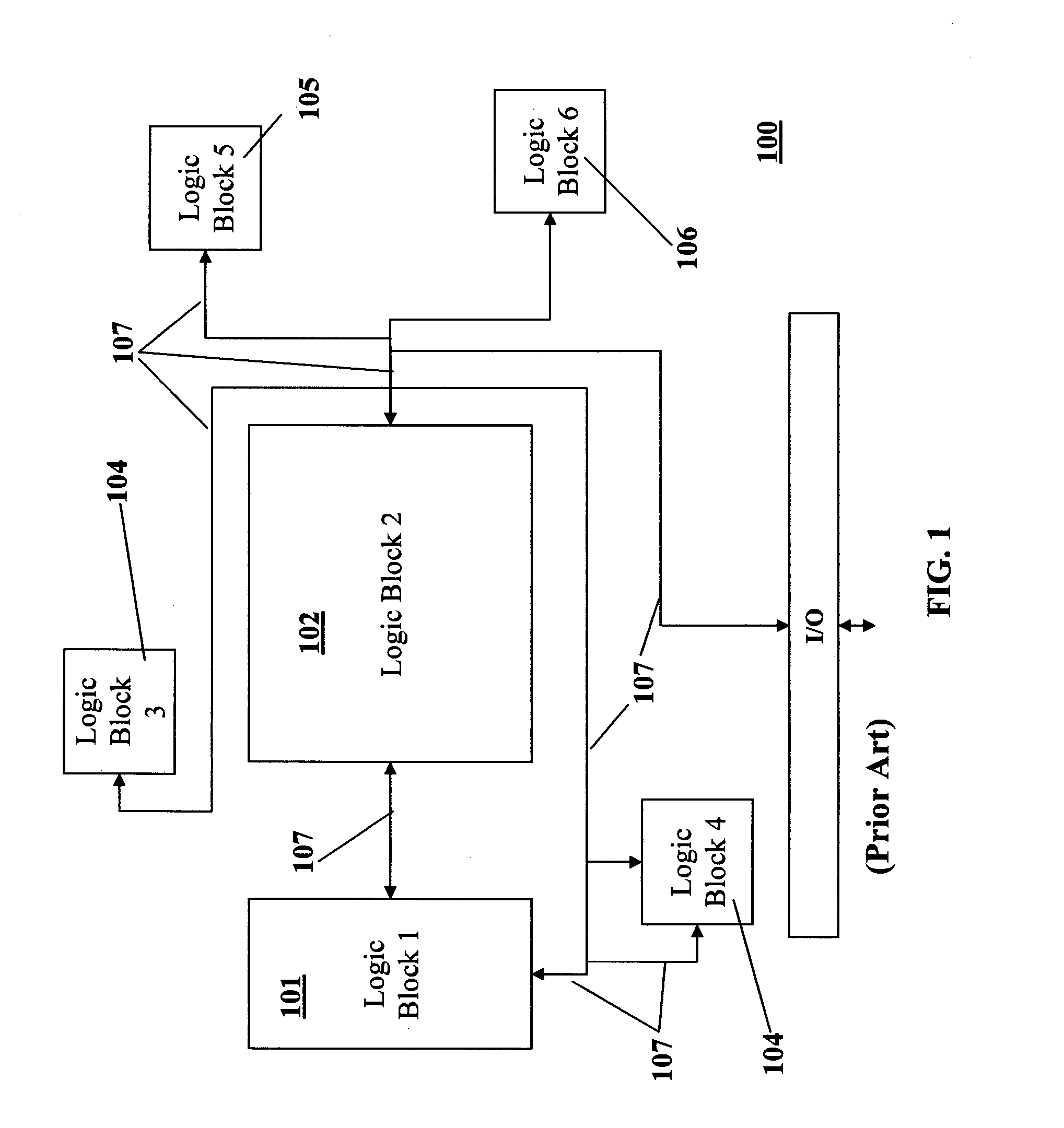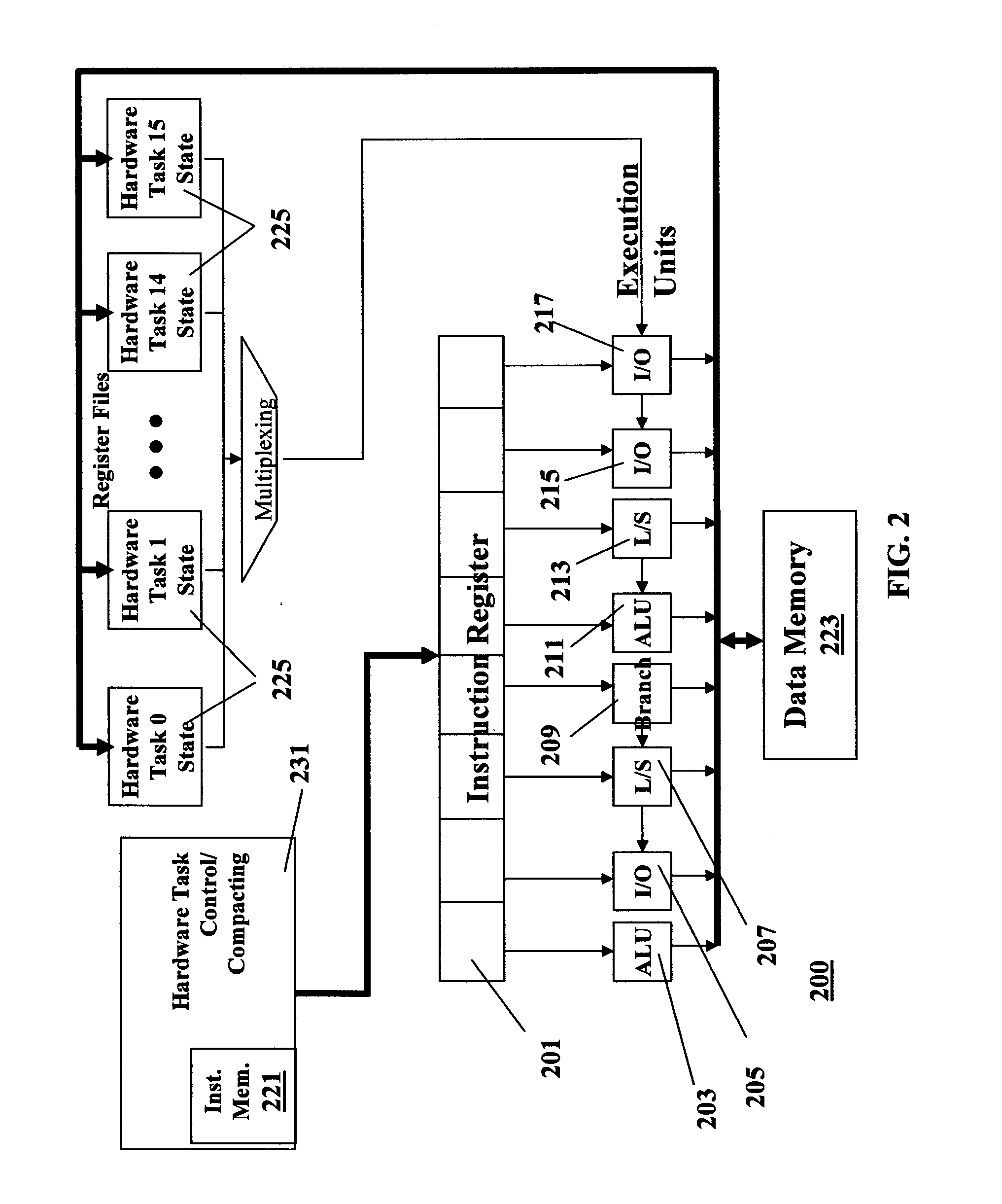Architecture and method for providing integrated circuits
- Summary
- Abstract
- Description
- Claims
- Application Information
AI Technical Summary
Benefits of technology
Problems solved by technology
Method used
Image
Examples
first embodiment
[0034] A first embodiment architecture in accordance with the principles of the invention is shown in FIG. 2. The architecture of FIG. 2 is a meta-processor 200 that allows concurrent execution of many tasks. It is based on a Very Long Instruction Word (VLIW) architecture, which has natural concurrency as part of the architecture. Users of the present invention design the hardware functions with software tools, dramatically reducing development costs.
[0035] The architecture of the present invention is a VLIW meta-processor that is a super ‘bit-bang’ machine, i.e., a processor that toggles the I / O of a chip using software, rather than hardware. Logic is implemented in software, running the algorithms that today's ASICs and FPGAs perform in hardware. Interconnect is implemented through memory mailboxes between programs. Both are described in more detail below.
[0036] VLIW processors differ from typical processors, e.g. the x86 series, in the length of the instruction word. Typical pro...
second embodiment
[0079]FIG. 14 shows a second embodiment architecture in accordance with the principles of the invention, meant to perform the functions in FIG. 13. A difference in architecture is the addition of instruction memory 221 on-chip, outside of the task control / compacting unit 231. This is because the hardware tasks will be much more complicated, especially when running processor code. Thus the code for each hardware task is located in the instruction memory 221 while the task control / compacting unit 231 contains cache instead of simple instruction memory.
[0080] The instruction length is 512 bits, made up of sixteen 32-bit instructions as shown in FIG. 15. It is substantially the same as the logic-only embodiment, with 32-bit-wide instruction words instead of 16.
[0081] Execution units 203, 1401, 205, 207, 209, 211, 213, 215, 217 are substantially identical to the logic-only version, except they are all 32-bit wide instead of 16 or 12.
[0082] The hardware task code is generated in an iden...
PUM
 Login to View More
Login to View More Abstract
Description
Claims
Application Information
 Login to View More
Login to View More - R&D
- Intellectual Property
- Life Sciences
- Materials
- Tech Scout
- Unparalleled Data Quality
- Higher Quality Content
- 60% Fewer Hallucinations
Browse by: Latest US Patents, China's latest patents, Technical Efficacy Thesaurus, Application Domain, Technology Topic, Popular Technical Reports.
© 2025 PatSnap. All rights reserved.Legal|Privacy policy|Modern Slavery Act Transparency Statement|Sitemap|About US| Contact US: help@patsnap.com



